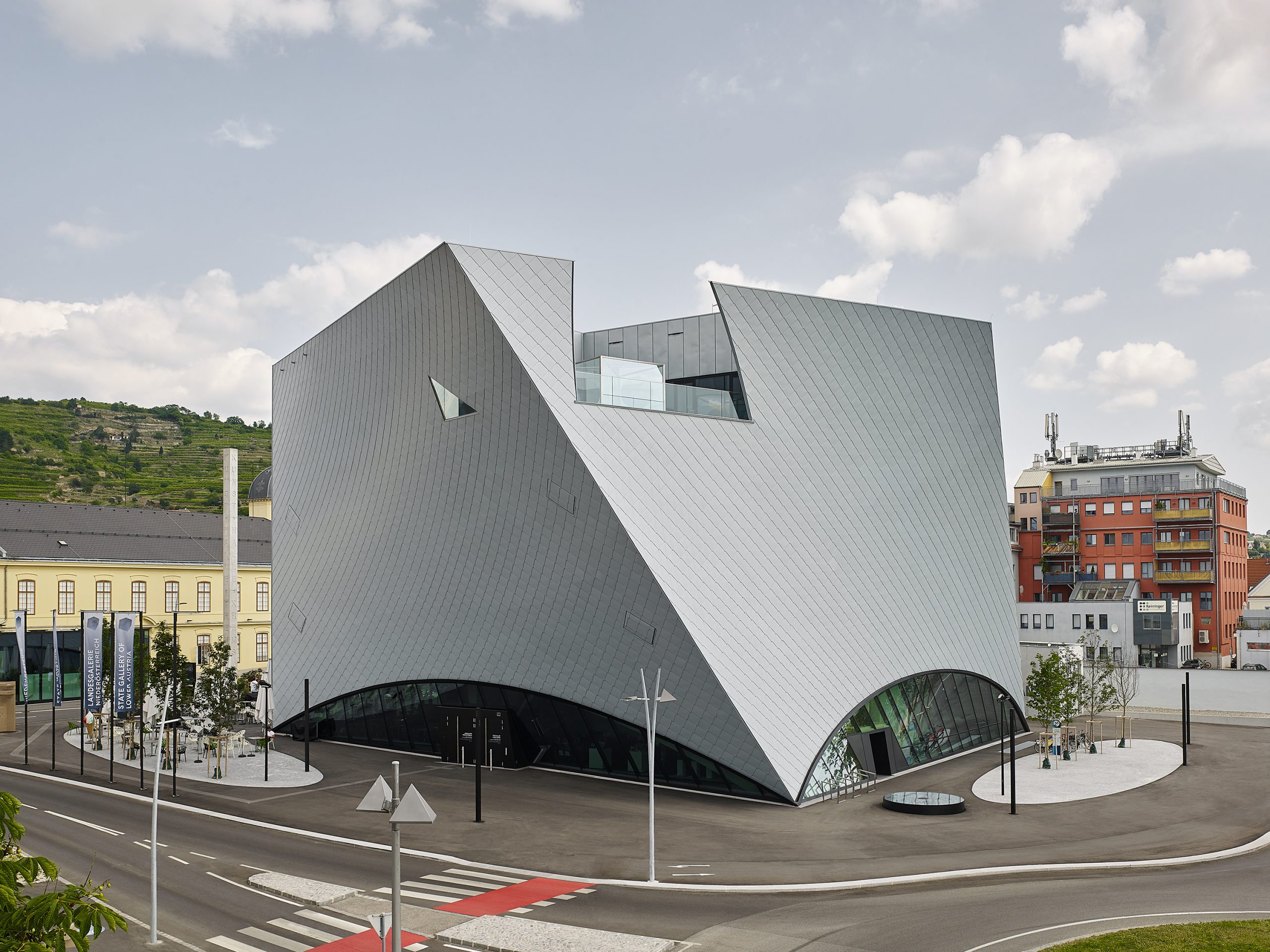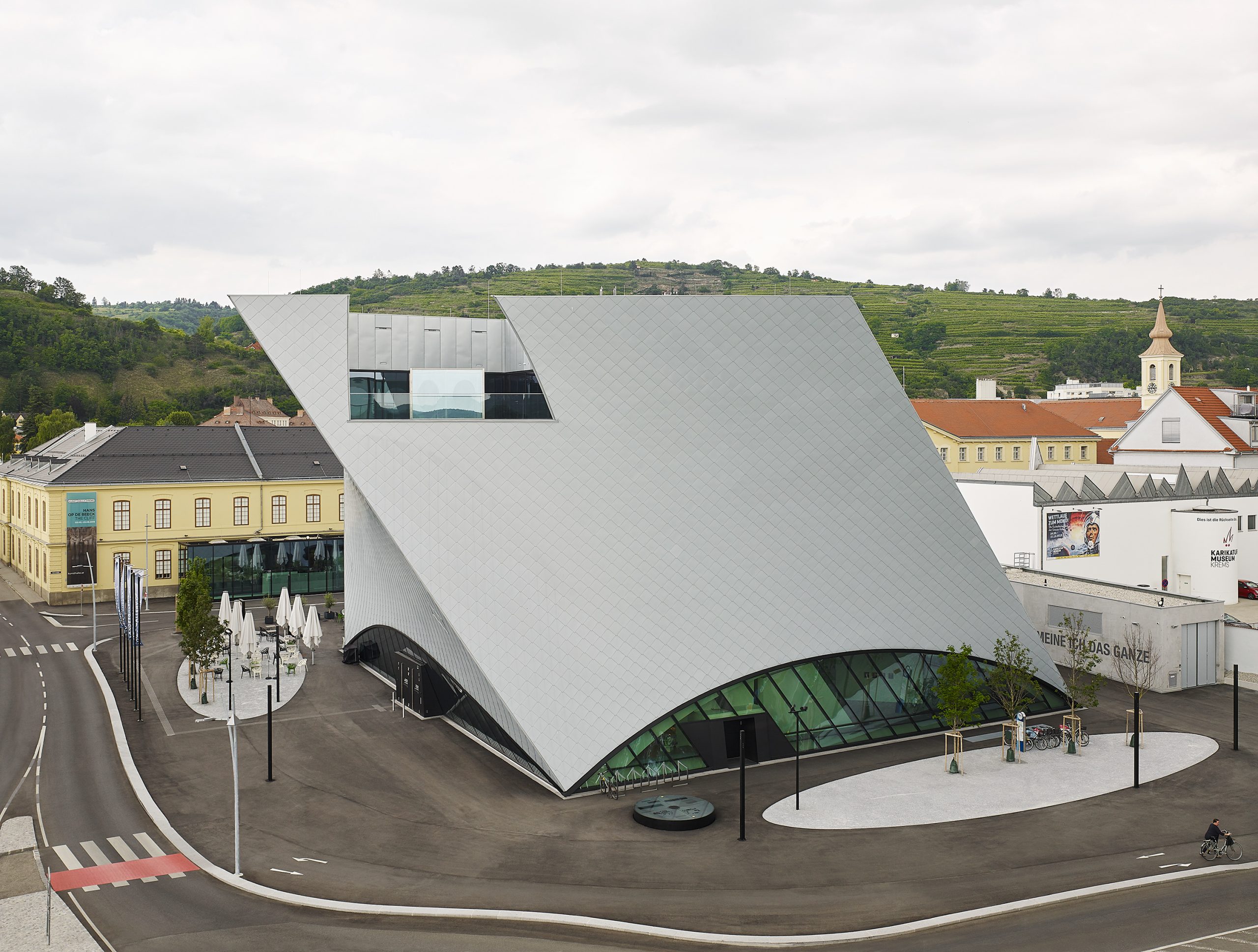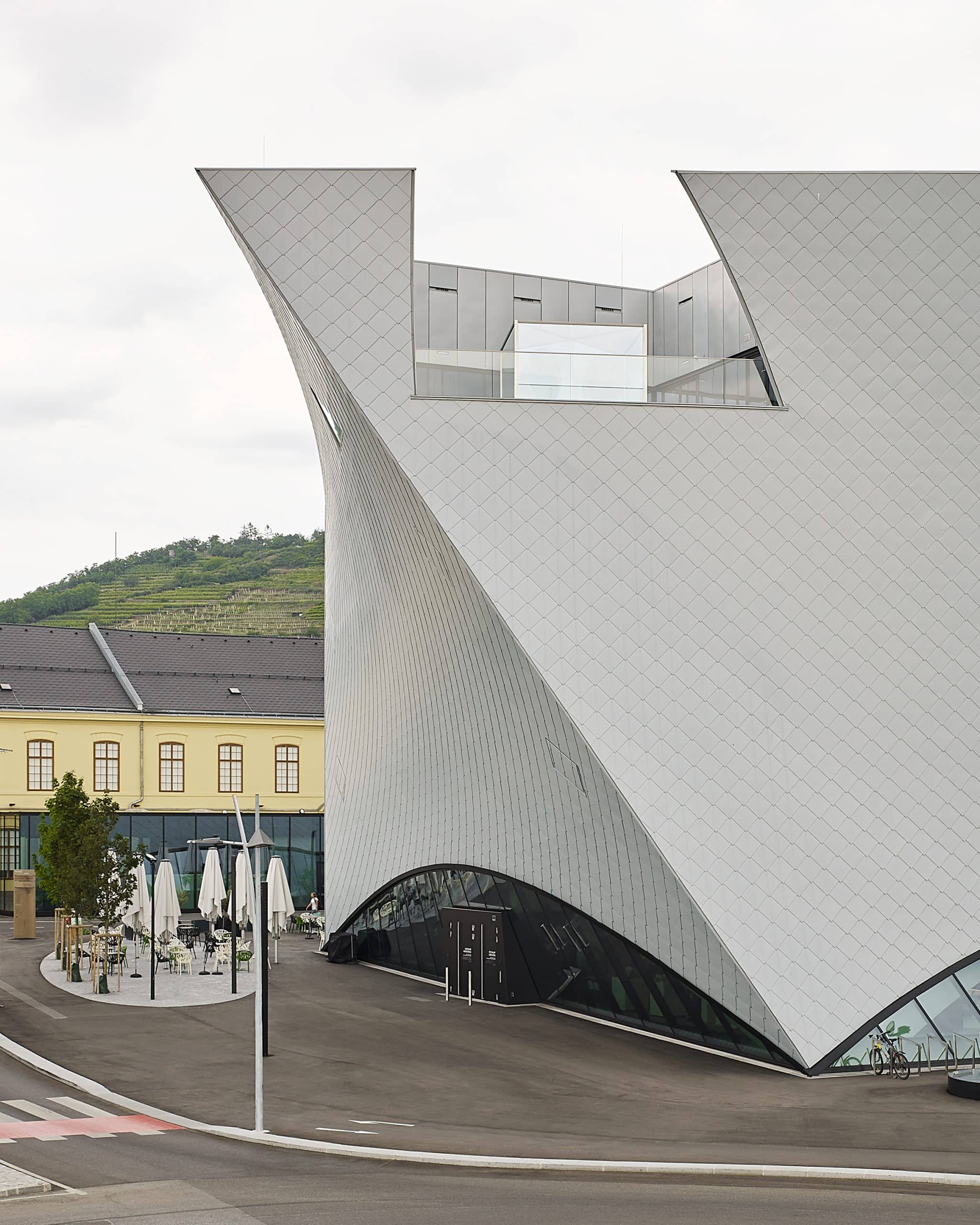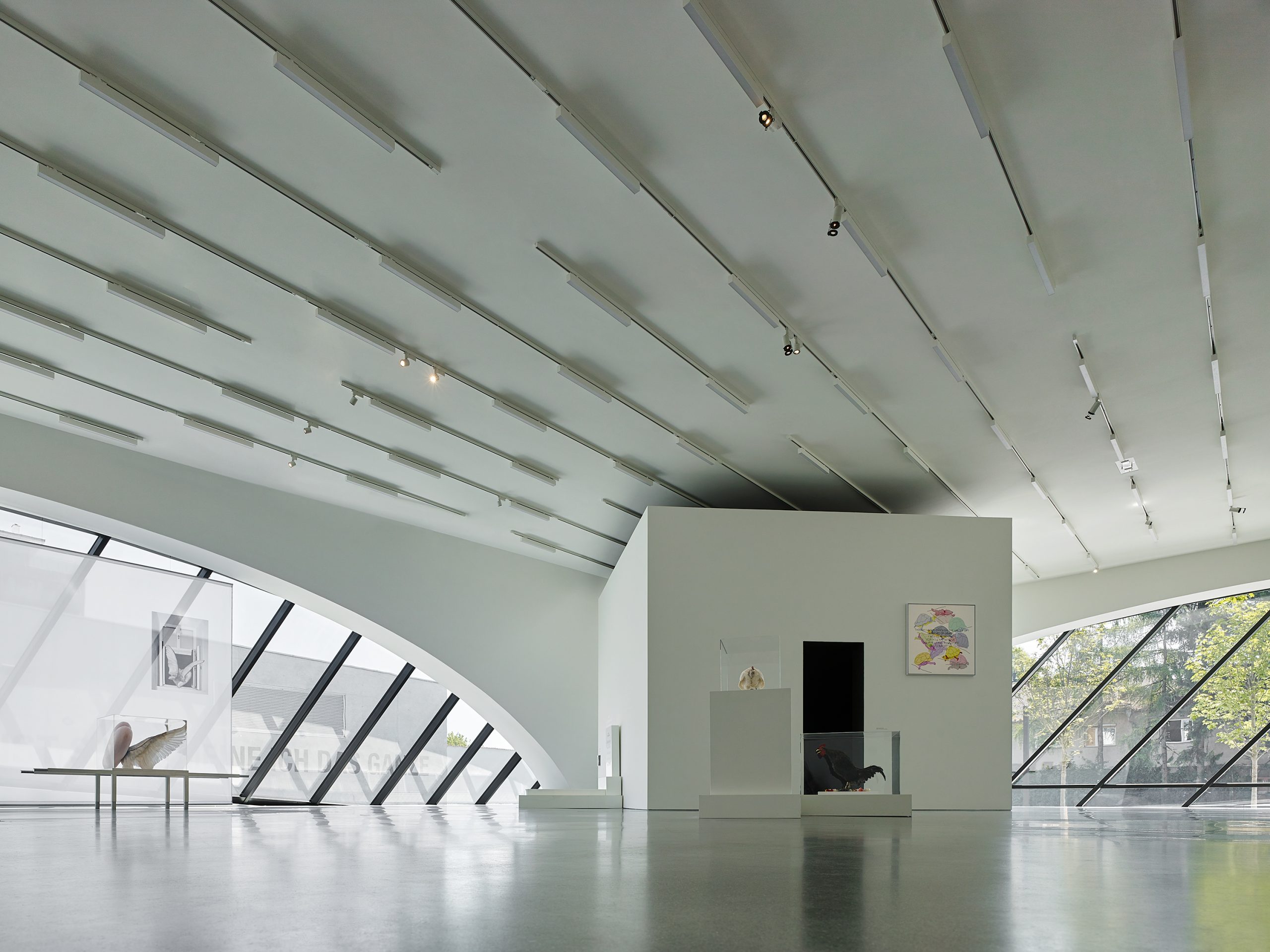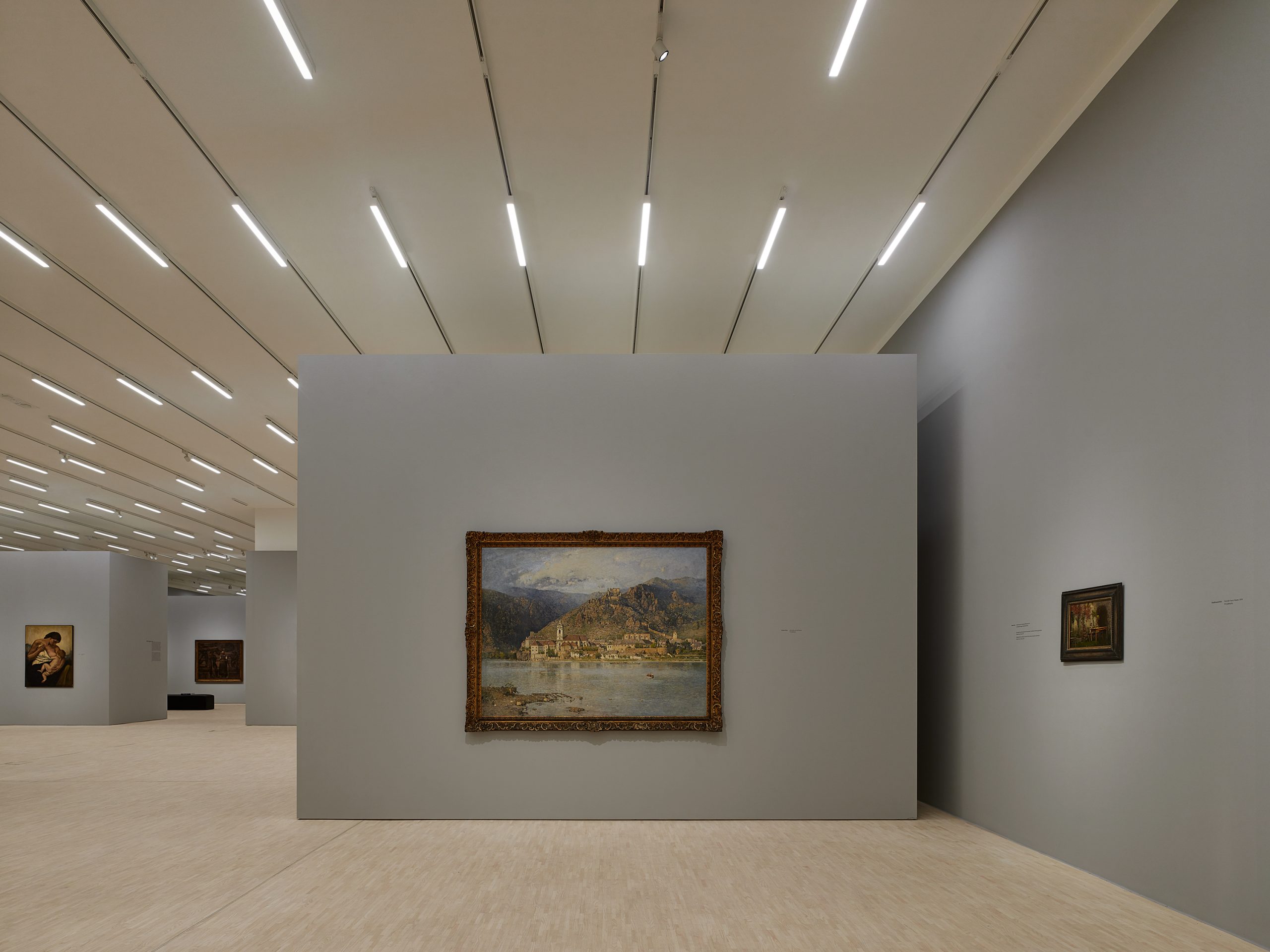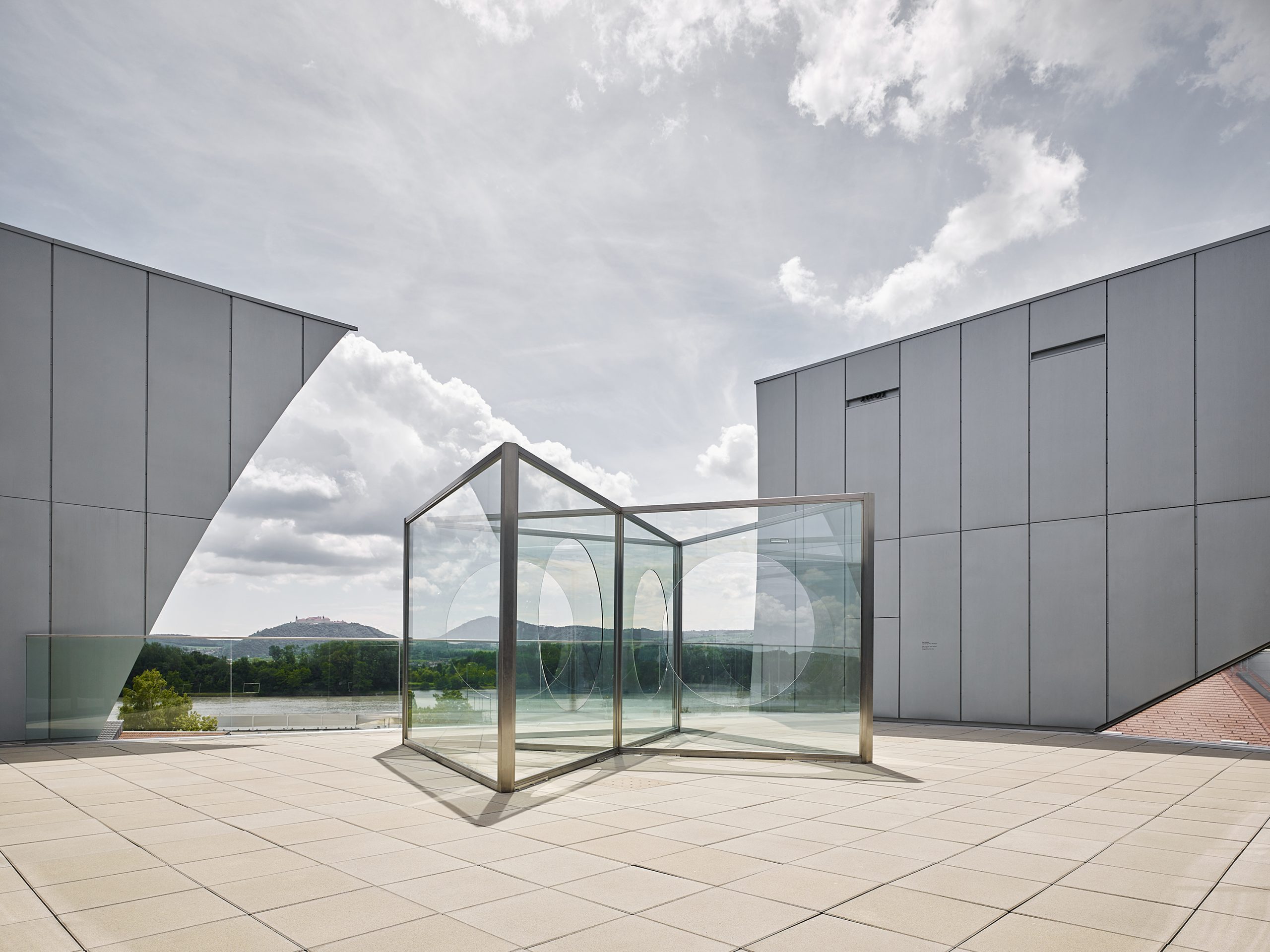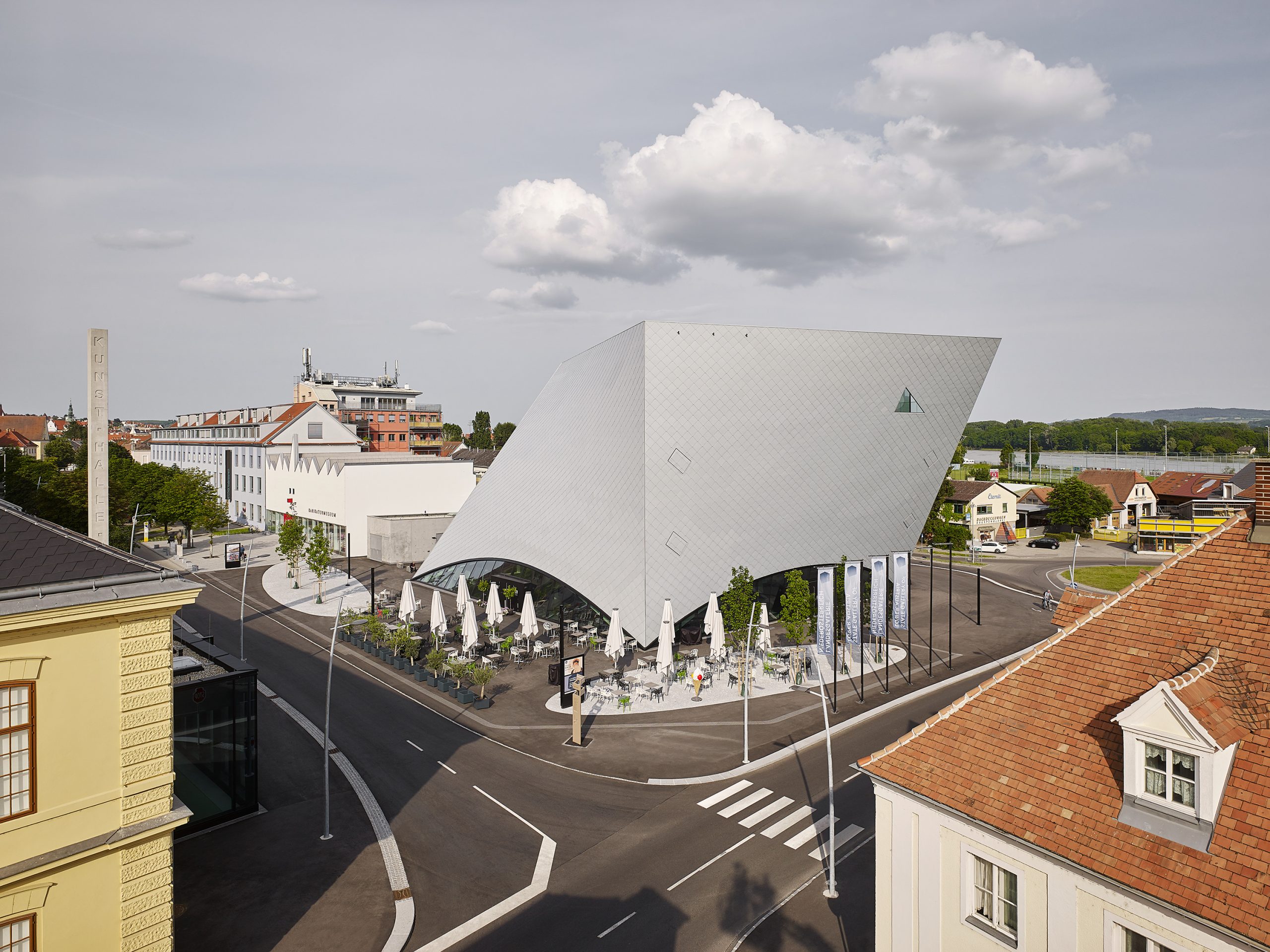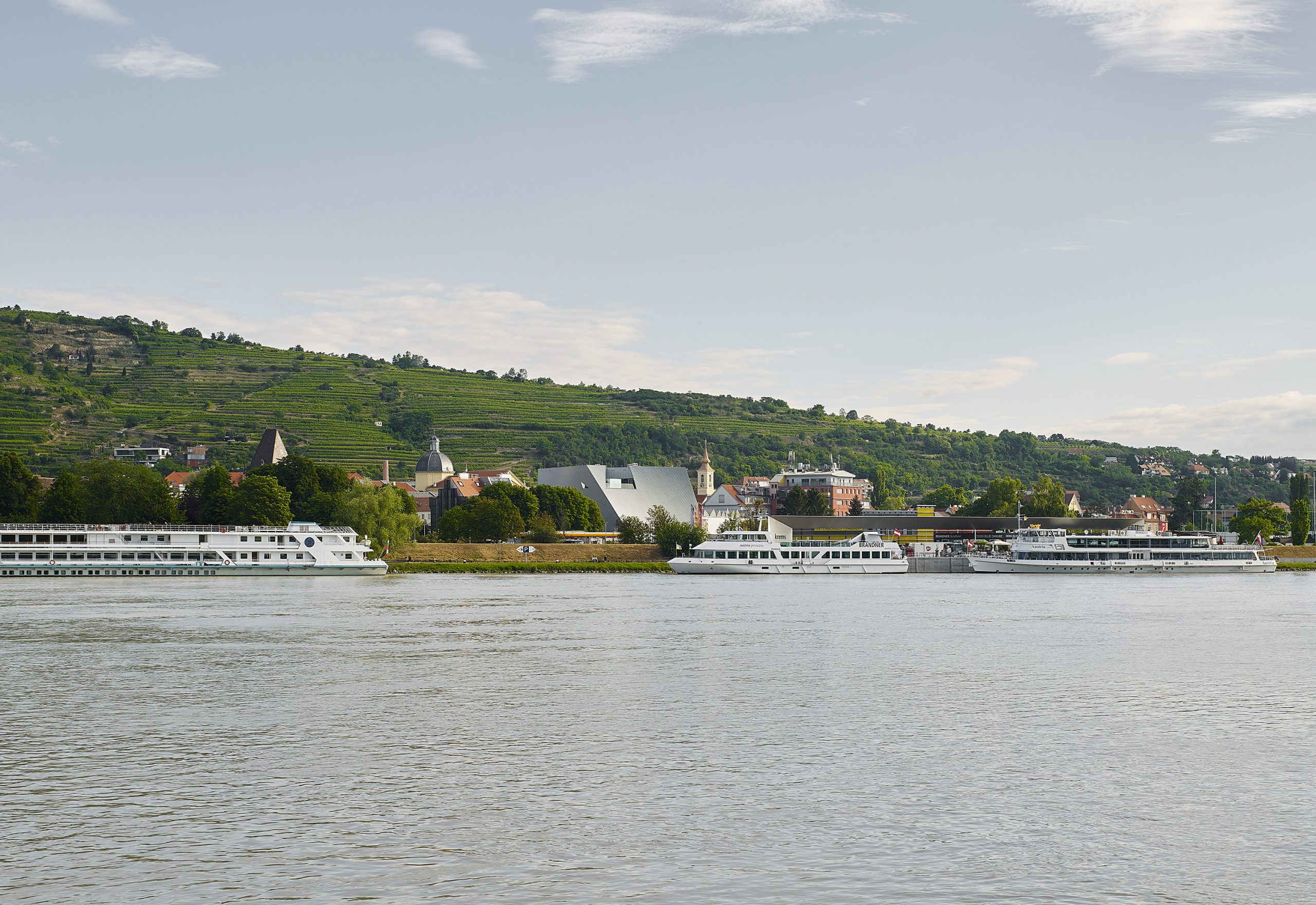State Gallery of Lower Austria
Krems, Austria – Marte.Marte Architects
It takes a lot for a structure of this kind to come into being. The manifestation of the new State Gallery of Lower Austria in Krems-Stein on the Danube is based on the bold vision of architects, a determined political will, paired with the orchestrated collaboration of museum experts, craftsmen, and companies, spiced with a touch of upheaval. Krems – a concentrated atmosphere on the wide river of the Danube, surrounded by gentle vineyards, structured by narrow alleys and well-formed squares, nurtured by the acoustic space of the Minorite Church and the museums of the Art Mile, resonating with the ethnographic music festival Glatt & Verkehrt, the cacophony of tourist voices, and the avant-garde Danube Festival, tastefully shifting between dry Federspiel wine and juicy apricot…
Opposite the strict Kunsthalle planned by Adolf Krischanitz in the former tobacco factory of the Tabakregie and next to the mimetic Caricature Museum by Gustav Peichl with its playful sawtooth roof, the solitary State Gallery sets an unmistakable mark for art and forms a striking alliance with the place. The structure, more sculpture than building, eludes estimation when moving around it, changing its expression and shape with every step, not intending to be to scale, but embodying pure tension of forces. Through the torsion around the axis of the building’s northwest corner, numerous hyperbolic surfaces are created. The connecting lines of two unequal squares at the base and roof levels form distorted surfaces, barely comprehensible to the human eye. The sculpture twists around itself, tapering upwards and offering a view towards the Danube through an incision, revealing the Benedictine monastery Stift Göttweig, perched on the edge of the Dunkelsteinerwald forest. Apart from the four glazed arches on the ground floor, this gesture immediately connects the building’s interior with the Genius Loci. Thus, one of the important identification points of the Wachau region comes into play, unmistakably bringing the historic monastery into the visitors’ view. Otherwise, the sculptural work presents a hermetic exterior. The shingled armor of matte zinc rhombuses transforms the concrete giant, resting on four points, into a blend of knight’s torso and armadillo.
Inside, a vertical constant in the form of two concrete access towers pierces through the floors, serving as a reference point, orientation aid, and Escher-like staircase all in one. Two escape staircases merge into a figure, forming a doubled DNA helix, guiding and confusing at the same time. In conjunction with the powerful stretches of the outer walls, each floor opens up a different layout. The effect is created as if the rooms are wandering from northeast to southwest. For the exhibitions, an independent wall system was developed with the experienced museum team and a renowned museum planner. The art will conquer the spaces, connecting with what feels vast and untamed when empty, as if one were traversing the belly of a giant beast.
The vision of the State Gallery in Krems corresponds to the holographically captured moment of the daring twist of a geometric shell around itself. What is perceived as a receding surface on one side becomes an overhanging steep wall on the other. Depending on the viewing angle, the surfaces twist – the movement captured in a still image comes back to life. Possibility becomes reality.
Text: Marina Hämmerle
